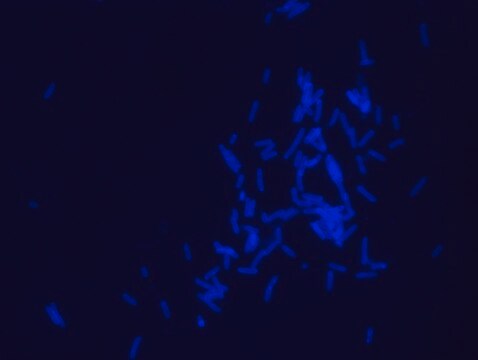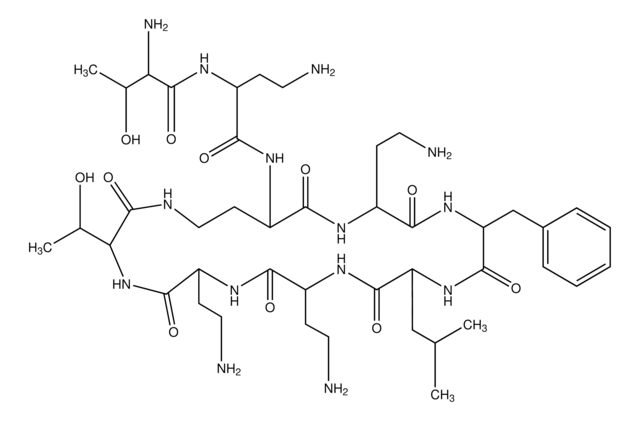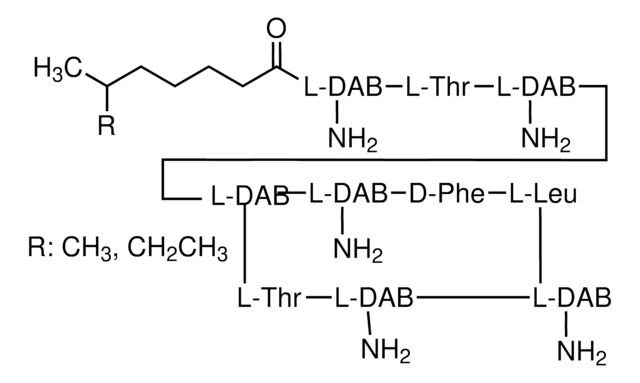Wichtige Dokumente
G1424
Globomycin from Streptomyces hagronensis
Synonym(e):
Globomycin, Glycine, N-(N-(N-(N-(N-(3-hydroxy-2-methyl-1-oxononyl)-N-methylleucyl)-L-alloisoleucyl)-L-seryl)-L-allothreonyl)-, rho-lactone, SF 1902
About This Item
Empfohlene Produkte
Biologische Quelle
Streptomyces hagronensis
Qualitätsniveau
Assay
≥98% (HPLC)
Form
powder
Farbe
white
Löslichkeit
DMSO: 1 mg/mL
Wirkungsspektrum von Antibiotika
Gram-negative bacteria
Wirkungsweise
enzyme | inhibits
Lagertemp.
−20°C
−20°C
InChI
1S/C32H57N5O9/c1-9-11-12-13-14-24-20(6)32(45)37(8)23(15-18(3)4)29(42)35-26(19(5)10-2)31(44)34-22(17-38)28(41)36-27(21(7)39)30(43)33-16-25(40)46-24/h18-24,26-27,38-39H,9-17H2,1-8H3,(H,33,43)(H,34,44)(H,35,42)(H,36,41)
InChIKey
VFGBXFZXJAWPOE-UHFFFAOYSA-N
Allgemeine Beschreibung
Anwendung
- Globomycin, a new peptide antibiotic with spheroplast-forming activity. I. Taxonomy of producing organisms and fermentation.: This study explores the taxonomy of the producing organisms of Globomycin and details the fermentation processes involved. This antibiotic shows spheroplast-forming activity, indicating its potential application in targeting bacterial cell wall synthesis (Inukai et al., 1978).
Biochem./physiol. Wirkung
Lagerklassenschlüssel
11 - Combustible Solids
WGK
WGK 3
Flammpunkt (°F)
Not applicable
Flammpunkt (°C)
Not applicable
Analysenzertifikate (COA)
Suchen Sie nach Analysenzertifikate (COA), indem Sie die Lot-/Chargennummer des Produkts eingeben. Lot- und Chargennummern sind auf dem Produktetikett hinter den Wörtern ‘Lot’ oder ‘Batch’ (Lot oder Charge) zu finden.
Besitzen Sie dieses Produkt bereits?
In der Dokumentenbibliothek finden Sie die Dokumentation zu den Produkten, die Sie kürzlich erworben haben.
Unser Team von Wissenschaftlern verfügt über Erfahrung in allen Forschungsbereichen einschließlich Life Science, Materialwissenschaften, chemischer Synthese, Chromatographie, Analytik und vielen mehr..
Setzen Sie sich mit dem technischen Dienst in Verbindung.






